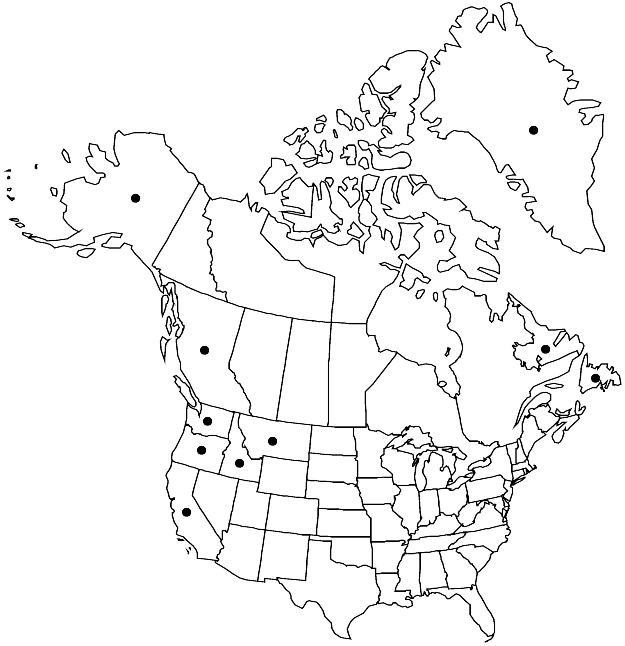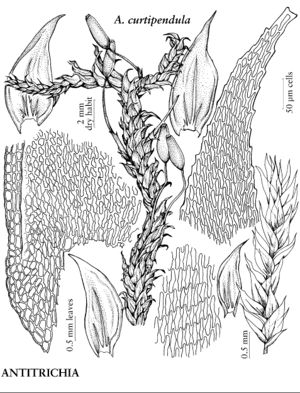Antitrichia curtipendula
Muscol. Recent., suppl. 4: 136. 1818.
Plants in mats to deep wefts, wide-spreading, green, stramineous, or yellow-brown when dry, bright green when moist. Secondary stems 10–20 cm, irregularly pinnate, lateral branches subequal, to 3 cm, sometimes pendent and distally flagelliform, occasionally bearing smaller (less than 5 mm) branchlets. Stem leaves erectopatent when dry, erect-spreading when moist, broadly ovate to ovate-lanceolate; margins serrulate-denticulate in apex; costa 2-fid distally, supplementary costae well developed, usually 2 or 3 on each side of main costa base, length more than 6 cells; laminal cell walls pitted throughout; medial cells 24–36 × 5–6 µm. Branch leaves similar. Perichaetial leaves short deltoid-apiculate to long gladiate-cuspidate and sheathing, basal laminal cells rectangular, 4–5:1, walls thin, medial cells flexuous-elongate, to 10:1. Seta 0.8–1.5 cm. Capsule erect-symmetric, brown to yellow-brown, oblong-ovoid, 4–5 mm. Spores 20–30 µm.
Habitat: Trunks and branches of Acer, Alnus, Populus, Prunus, Quercus, conifers, dead branches, snags, decorticated or decomposing logs, siliceous rock, soil, humus
Elevation: low to high elevations (0-2100 m)
Distribution

Greenland, B.C., Nfld. and Labr., Alaska, Calif., Idaho, Mont., Oreg., Wash., Europe, w Asia, montane e Africa, Atlantic Islands (Canary Islands, Faroe Islands, Iceland, Madeira).
Discussion
In California, the distribution of Antitrichia curtipendula is almost identical to that of the coastal redwood. Antitrichia curtipendula occurs in the cedar-hemlock-larch ecozones of northern Idaho and northwest Montana (an area noted for many maritime disjuncts), and in mesic microhabitats along the Salmon and Snake rivers and their tributaries. In British Columbia, A. curtipendula also penetrates much further inland in the Columbia and Fraser watersheds, almost as far east as the Continental Divide. In eastern North America the occurrence of A. curtipendula in Avalon Peninsula, Newfoundland, has been well documented; its reported occurrences near Lake Superior and in the southern Appalachian Mountains are highly doubtful (H. A. Crum and L. E. Anderson 1981).
Some authors (D. H. Norris and J. R. Shevock 2004) refer all material of Antitrichia curtipendula in western North America, especially along the coast, to A. curtipendula var. gigantea or A. gigantea. Others consider the larger, more massive coastal material an environmental variation. The leaves of this species are loosely imbricate to open-subsecund and more or less plicate.
Selected References
None.
